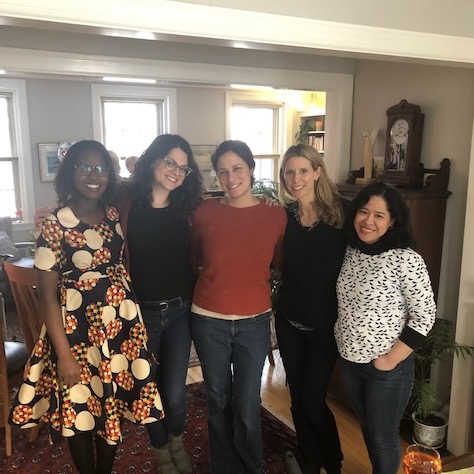Today, International Women’s Day 2022, I decided to go back and read what I had written on this same day in 2019. I wrote this:
I am always concerned in addressing women as a whole, about who won’t be able to relate, who may feel a little left out or left behind, disconnected from “our story.”
It seems incredibly obvious that we have to respect each woman as an individual charting her own course, yet there is a human tendency when we address the concerns or issues of a group to diminish the nuances of the individual. We want to put the challenges that group faces into neat boxes so that we can then box up a neat solution. Even though many of the issues women face in the work place today are the same, the solutions for how each woman addresses them are not the same. The ways in which she experiences and internalizes them are not the same. While we continue to do the urgent, necessary work of making our systems more inclusive, of creating environments where a greater variety of people are seen and appreciated and supported, we must support the individuals, each trying to make her way in her way.
I would write this a little differently now, but what I see when I look back at this paragraph is how deeply my thinking is formed by my vantage point as an executive coach. Sitting with hundreds of women, each a unique character navigating similar plotlines. The plotlines are the systems perpetuating biases that manifest in strikingly consistent ways across a variety of industries and cultures.
I also work in groups, which have continued to reveal how this tension plays out over and again; the complexity of raising awareness about the challenges any group of people face without minimizing distinctive experiences and individual perspectives on what should or could be done. Our cognitive need to efficiently categorize (a gift that that comes with our human brains) gets in our way over and again.
I’ll put forth these three thoughts (none of which are new but all of which are still relevant!):
1) I keep saying this in a variety of contexts but will continue to shout it from rooftops: Leaders, please be sure you are coaching your people. Sometimes you will advise, instruct, share, but you must also be coaching. If you are coaching your people, then you are creating space to learn from them. This includes the chance to better understand challenges they may face because of a “group” they identify with while also learning and appreciating how this particular individual processes their experience and wishes to navigate forward. They can tell you if they want advice, sponsorship, understanding, space or any of the other hundred things you might assume they want but instead can ask of them.
Coaching requires us to understand the nuances of the person before us. Their specific worldview, preferences, desires, experiences, and strengths. The coaching dynamic demands we avoid generalizations, assumptions and the insistence of our own perspectives. When we do offer our perspectives and experiences, it’s without any expectation they be embraced.
2) Continue to work towards more voices in more rooms of every gender, race, ethnicity, disability, age, level of seniority where all are invited to speak. We are still too dependent on a few voices to represent too many people. We can’t have three women representing all women and two Gen Z employees representing their generation and one Black man representing Black people and one Chinese-American woman representing Asian and Pacific Islanders. This is all incredibly obvious and also it’s happening all the time. More diversity, more representation, more opportunity for us to recognize the multiple perspectives within every group of people we put in categories and groups. We all have so much to learn from each other.
3) Remember where the challenges we face when trying to achieve true equity and inclusion actually come from. Exclusion is created by the excluders not the people being excluded. This is also incredibly obvious and yet we constantly end up in dynamics in which people with power who have created and/or benefitted from the problem think they are helping or serving someone else’s problem rather than owning the need to address an issue that they created and/or are perpetuating. It is maddening that the bulk of the work in creating more inclusive cultures falls on those most likely to be excluded.
I work with so many individuals and organizations doing the hard work of trying to do better with all of this. It fills me with hope and gladness. And also we have miles (so many miles) to go before we sleep.

